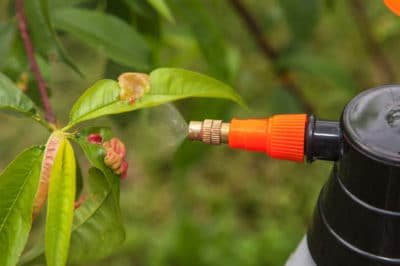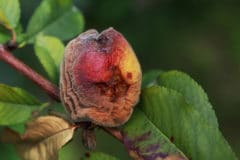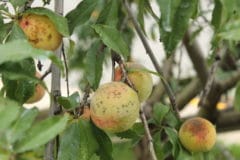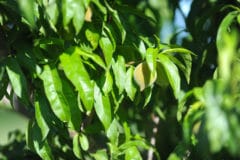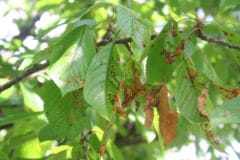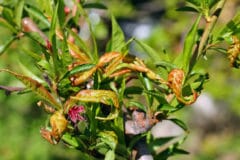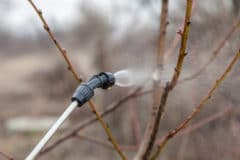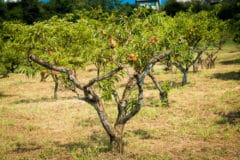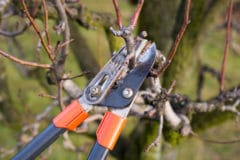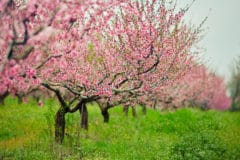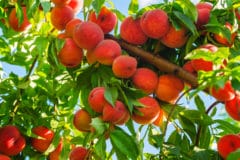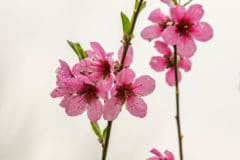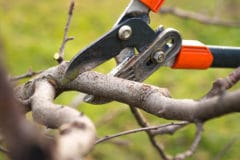Signs and Symptoms of Peach Leaf Curl
Peach leaf curl first shows on leaves in early spring. The first signs are red blotches on leaves which later become puffed-up and turn yellow or grey as fungal spoors develop.
The leaves may remain on the tree or they may fall off with a new set of leaves developing in their place. However, when leaves fall and are replaced, the tree loses energy for fruit production.
The peach tree leaf curl fungus can also spread to twigs and new shoots, causing them to become thick and stunting their growth. Sometimes the fungus also causes fruit to develop cracks and a corky surface.
Life Cycle of Peach Leaf Curl Fungus
When temperatures are between 48°and 78°F (8.8° and 25.5°C) and there is moisture from rain, dew, or irrigation, conditions are ideal for the spread and growth of the peach leaf curl fungus. The splashing water moves the spoors from one area of the tree to another during this time.
Symptoms first appear on leaves a few weeks after they bud-out, and additional symptoms show-up on twigs and fruit later in the season. The fungal spoors then fall to the ground where they become dormant through the summer and over winter, resuming their life-cycle the following spring.
Controlling Peach Leaf Curl
One way of controlling this peach tree disease is by planting resistant varieties. These include:
- Q-1-8
- Indian Free
- John Muir
- Frost
- Oregon Curl Free
These varieties may still show some signs of peach leaf curl, but they are less susceptible to damage than non-resistant varieties. The Frost variety may need an application of fungicide the first two years of growth to fully develop resistance.
Another method of controlling peach leaf curl is by using a dormant oil spray. These sprays contain various forms of copper which are powerful fungicides. The spray is applied when the tree is bare and dormant during winter or just before buds appear. Copper mixed with lime-sulfur, known as Bordeaux mix, is also effective for preventing peach leaf curl.
Raking up old leaves and fallen fruit and disposing of them may help also prevent the spread of peach leaf curl.
However, control measures are only effective for the next season and nothing can be done to stop an infection during the season when symptoms appear.
